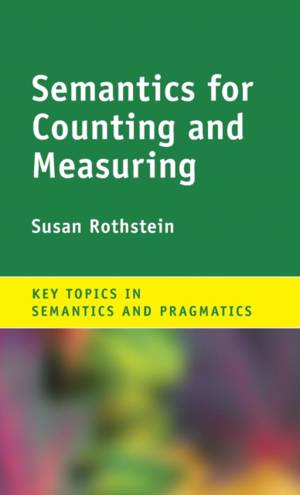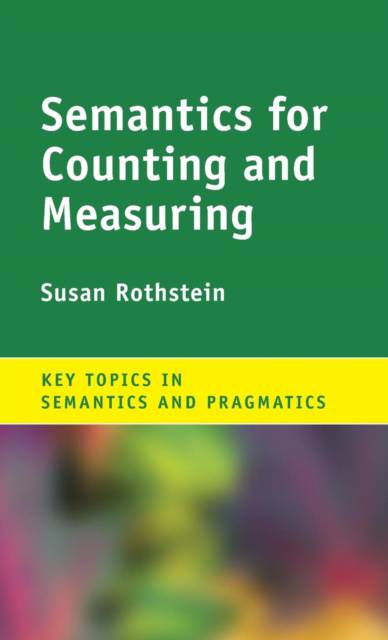
- Afhalen na 1 uur in een winkel met voorraad
- Gratis thuislevering in België vanaf € 30
- Ruim aanbod met 7 miljoen producten
- Afhalen na 1 uur in een winkel met voorraad
- Gratis thuislevering in België vanaf € 30
- Ruim aanbod met 7 miljoen producten
Zoeken
Omschrijving
The use of numerals in counting differs quite dramatically across languages. Some languages grammaticalise a contrast between count nouns (three cats, three books) vs 'non-count' or mass nouns (milk, mud), marking this distinction in different ways. Others use a system of numeral classifiers, while yet others use a combination of both. This book draws attention to the contrast between counting and measuring, and shows that it is central to our understanding of how we use numerical expressions, classifiers and count nouns in different languages. It reviews some of the more recent major linguistic results in the semantics of numericals, counting and measuring, and theories of the mass/count distinction, and presents the author's new research on the topic. The book draws heavily on crosslinguistic research, and presents in-depth case studies of the mass/count distinction and counting and measuring in a number of typologically unrelated languages. It also includes chapters on classifiers, constructions and adjectival uses of measure phrases.
Specificaties
Betrokkenen
- Auteur(s):
- Uitgeverij:
Inhoud
- Aantal bladzijden:
- 270
- Taal:
- Engels
- Reeks:
Eigenschappen
- Productcode (EAN):
- 9781107001275
- Verschijningsdatum:
- 6/04/2017
- Uitvoering:
- Hardcover
- Formaat:
- Genaaid
- Afmetingen:
- 140 mm x 216 mm
- Gewicht:
- 480 g

Alleen bij Standaard Boekhandel
+ 374 punten op je klantenkaart van Standaard Boekhandel
Beoordelingen
We publiceren alleen reviews die voldoen aan de voorwaarden voor reviews. Bekijk onze voorwaarden voor reviews.











